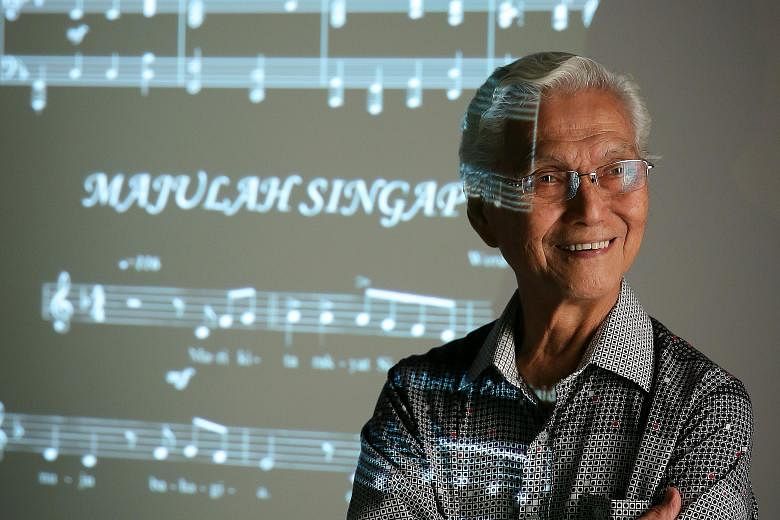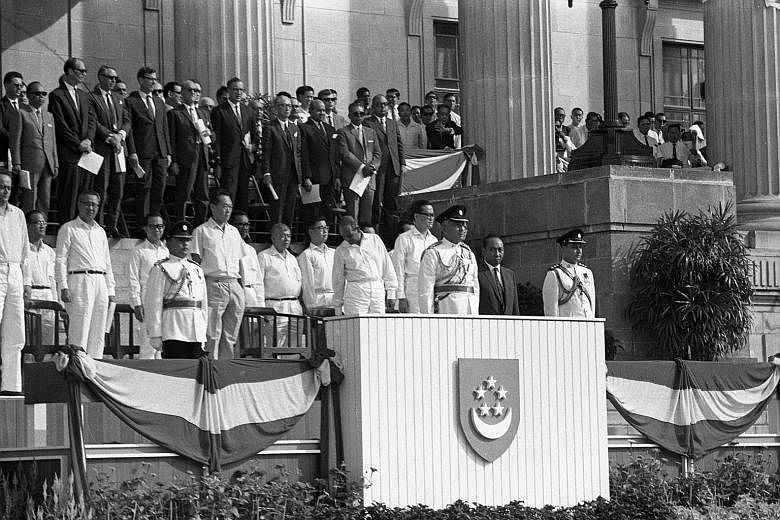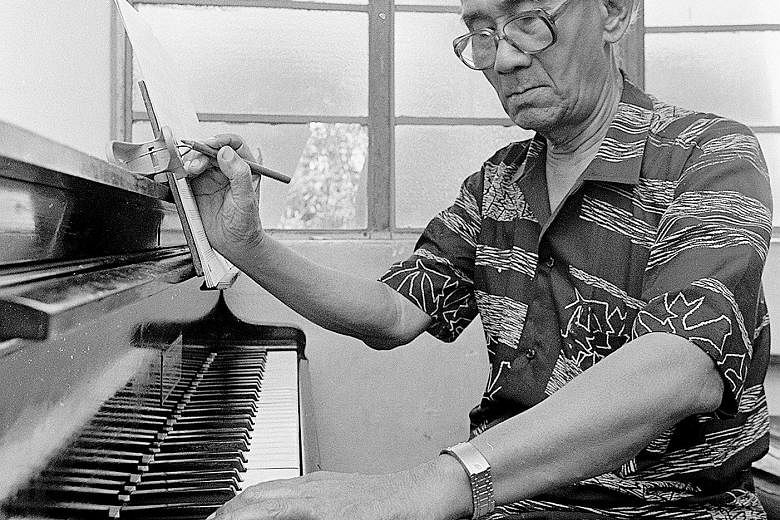On this day 50 years ago, Singapore's first as an independent nation, Malaysian flags came down and the federation's anthem, Negaraku, ceased to be played.
Majulah Singapura - composed by self-taught musician Zubir Said seven years previously for the opening of the Victoria Theatre - was formally adopted as the national anthem of an independent Singapore.
Singaporeans sang it with mixed feelings - despair, anxiety and determination - said art teacher Wong Hiong Boon, 83.
"We didn't have the British. We didn't have Malaysia. We were alone and scared. Could we survive by ourselves? Majulah Singapura told us we, the 'rakyat', the people, could...
"It was the first song we could call our own. It was the first national anthem I sang with so many feelings. It gave us courage and hope."
-
NATIONAL ANTHEM MILESTONES
-
• 1958: Majulah Singapura is first performed in public at a concert at the Victoria Theatre. It was composed by Mr Zubir Said for the theatre's official reopening, at the request of then Singapore mayor Ong Eng Guan.
• 1959: Britain grants Singapore self-government, but maintains control of defence, internal security and foreign affairs. The People's Action Party wins a landslide victory in elections for the new legislative assembly. Its leader, Mr Lee Kuan Yew, becomes Singapore's first prime minister. A revised Majulah Singapura is formally introduced as the national anthem on Dec 3, when Mr Yusof Ishak is inaugurated as Yang di-Pertuan Negara (Head of State). The state crest and state flag are also inaugurated.
• 1962: Referendum on merger with Federation of Malaya.
• 1963: Singapore officially becomes part of Malaysia on Sept 16.
• 1965: Singapore is expelled from Malaysia on Aug 9; it is now independent. Mr Yusof becomes Singapore's first president; Majulah Singapura is formally adopted as its national anthem.
• 1966: First declaration of the National Pledge. Written by then Foreign Affairs Minister S. Rajaratnam, it called on Singaporeans to be one united people, regardless of race, language or religion. The first National Day Parade was held on Aug 9 at the Padang.
And hope was much needed after years of upheaval - as a roll call of national anthems shows.
Under colonial rule, Mr Wong sung God Save The King and, later, God Save The Queen. Under the Japanese, in 1942, the then 10-year-old started school each morning with a bow to the east and a rendition of Kimigayo. The merger with Malaysia in 1963 brought with it Negaraku.
A year into the union, riots broke out, said retired airforce officer Timothy de Souza, 68. When wailing sirens pierced the night, people scurried home to beat the curfew.
Mr de Souza said: "Our dream, a united Malaysia, was crumbling before our eyes. This was not main-main (play) - it was real."
Over dinner, his father would tell him to "keep your wits about you", adding "if you're on the bus and it gets stopped, if there's a barricade, you have to look after yourself".
Mr de Souza, then in his last year of pre-university, could have gone on to study medicine.
He chose not to, going to work to help his family through a future that seemed bleak.
When the Singapore Armed Forces Training Institute was set up in 1966, he signed on. He later became one of the country's first fighter pilots.
On Aug 9, 1966, he stood on the Padang as a fresh-faced recruit for the first National Day Parade, joining a crowd of over 20,000 in a thunderous rendition of Majulah Singapura, and the first declaration of the National Pledge.
"As I sang, I prayed to God. I said, 'please look kindly on this nation that has suffered so much in the last two years'. That day, we sang the anthem with all our hearts.
"Our backs were against the wall, but we survived a year of independence. We had such resolve. When we sang, we were telling each other: Look how far we've come."
Majulah Singapura was, after all, an anthem for the people. There was no nod to a ruler, no mention of divine luck or providence. The future of the unlikely nation lay in the hands of its people.
Mr Wong said: "I told myself, 'This is the final national anthem I will sing. Our future is ours.'
"And look where we are now."
Click here to read more stories from this year's National Day supplement.




